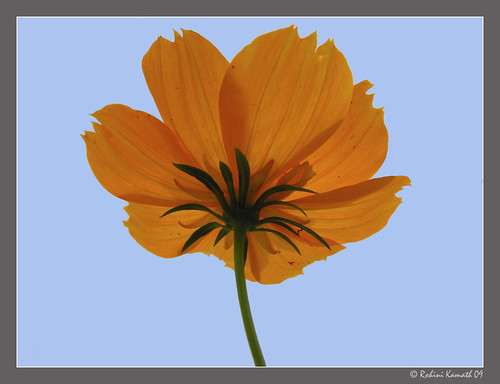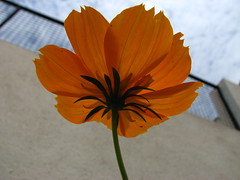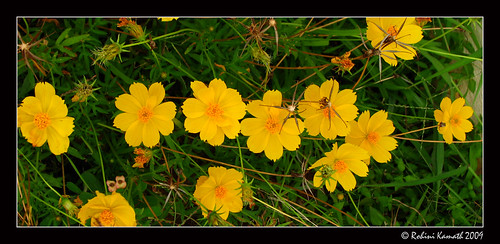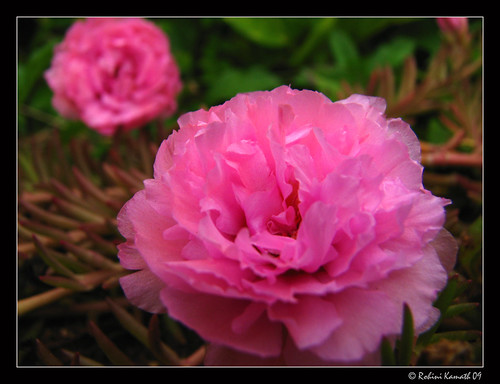
The Moss Rose is supposed to be a rather common flower in Indian gardens, but I first saw it on the way to work, growing in the Circle near Bagmane TechPark. At the height of summer, the ground in which it stood was parched; but the flowers were all in bloom, a riot of bright magenta.
Then and there, I decided that I must have it. I acquired 2, from a gaadi wala. It had no flowers then, so I did not know what colours it would yield. I did not know the name either until Mom dropped by and called it "Table rose".
Interestingly only in India is it referred to it as Table Rose, the actual name according to Google-land, is Moss Rose. This, I found, after a hour of extensive googling.
I have two, and both turned out to be a candy floss pink, not the magenta I had seen. Here is a Bud, looking rather nice, growing in front of a tangle of weeds.
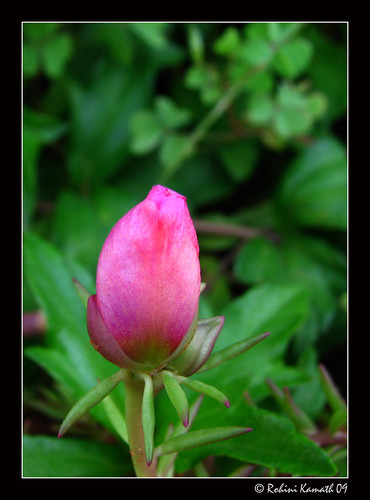
Some times, weeds can enhance the beauty of your garden; as in this case ( or so I like to convince myself) but only in Macro mode.
Details:
Scientific Name : Portulaca grandiflora
Family: Portulacaceae (purslane Family)
Where did it come from?
Originally from the hot, dry plains of southern Brazil, Uruguay and northern Argentina, moss rose is cultivated throughout the world as a favorite garden annual.
Can you eat it?
The Purslane is a common weed, The related purslane (P. oleracea) is a bothersome weed (which I yank out every now and then) in warm climates, although it is widely cultivated for food and has been for more than 2000 years. In fact, purslane, which is used raw in salads and cooked like spinach as a potherb, is very high in vitamins A, B1 and C.
Growing:
Needs full sun to flower. Do not water with overhead irrigation ( Means dont give the plant a shower ); it damages the flowers.
Moss rose grows well in poor, sandy or gravelly soils. The soil must be very well-drained. ( This is according to a lot of non-Indian websites, but I think the joy of tropical climates is that you can chuck anything in the ground and it will grow well) Be fearless, grow it anywhere.
Propagation:
Apparently, the seeds are as tiny as dust ( this explains why I never saw any) So mix them with sand before sowing to make them easier to scatter. But lucky for us, in warm climates, moss rose usually self-seeds itself ( This is what Im counting on)

Photography Tip:
What to do when the background is distracting? ( the moss rose is growing in front of bushes of short marigolds or the wall of the garden is white ) I have both these problems. Mighty Mouse Pad to the rescue! Place behind the subject and adjust exposure accordingly.
Where can you buy these flowers and do your bit for society?
If you live in Bangalore, there is a nursery in Jeevan bheema nagar managed by The Association of People with Disability. They have a well trained staff who are extremely helpful. They also stock manure, gardening implements, pots, manure mixed mud and fertilizers and pesticides.
Sources:
http://www.floridata.com/ref/P/port_gra.cfm
More Pictures of Different Varities:
http://davesgarden.com/guides/pf/showimage/6919/

